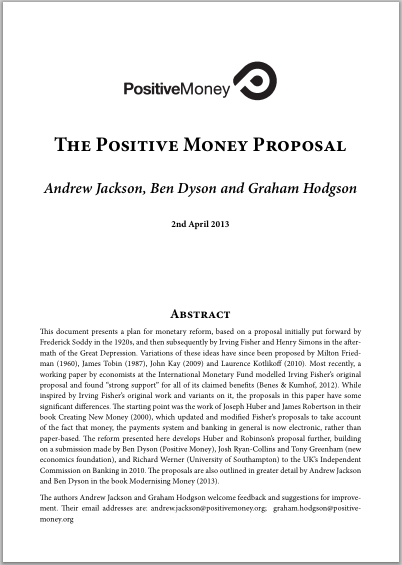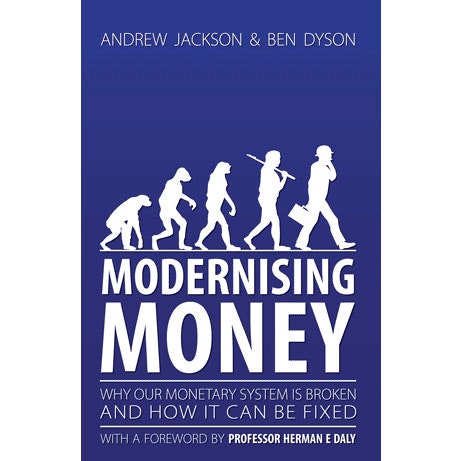The Positive Money Proposal – Plan for Monetary Reform


This document presents a plan for monetary reform, based on a proposal initially put forward by Frederick Soddy in the 1920s, and then subsequently by Irving Fisher and Henry Simons in the aftermath of the Great Depression. Variations of these ideas have since been proposed by Milton Friedman (1960), James Tobin (1987), John Kay (2009) and Laurence Kotlikoff (2010). Most recently, a working paper by economists at the International Monetary Fund modelled Irving Fisher’s original proposal and found “strong support” for all of its claimed benefits (Benes & Kumhof, 2012).
While inspired by Irving Fisher’s original work and variants on it, the proposals in this paper have some significant differences. The starting point was the work of Joseph Huber and James Robertson in their book Creating New Money (2000), which updated and modified Fisher’s proposals to take account of the fact that money, the payments system and banking in general is now electronic, rather than paper-based. The reform presented here develops Huber and Robertson’s proposal further, building on a submission made by Ben Dyson (Positive Money), Josh Ryan-Collins and Tony Greenham (new economics foundation), and Richard Werner (University of Southampton) to the UK’s Independent Commission on Banking in 2010.

The proposals are also outlined in greater detail by Andrew Jackson and Ben Dyson in the book Modernising Money (2013).
Here you can read the Positive Money system explained in Plain English.